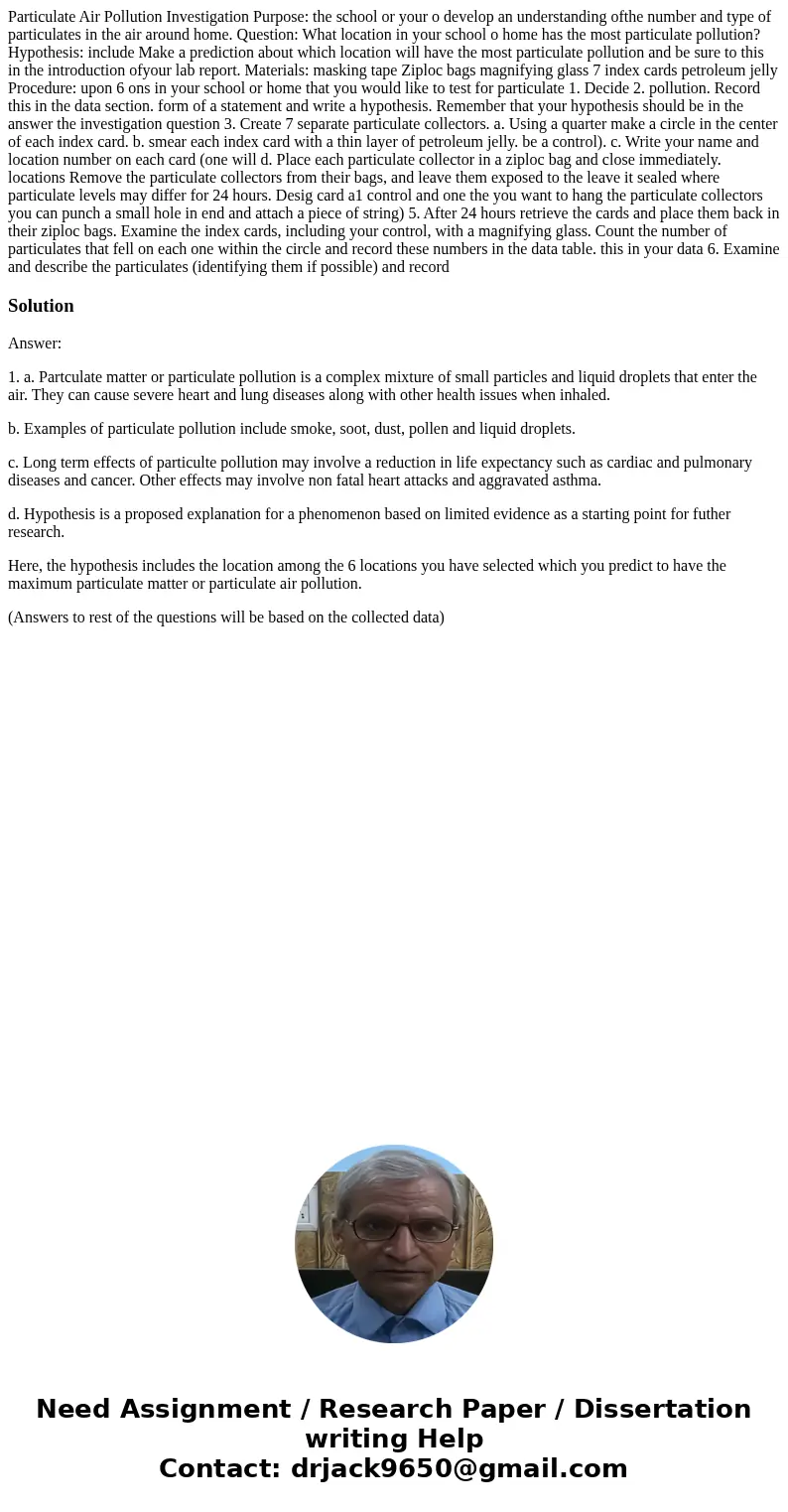Particulate Air Pollution Investigation Purpose: the school or your o develop an understanding ofthe number and type of particulates in the air around home. Question: What location in your school o home has the most particulate pollution? Hypothesis: include Make a prediction about which location will have the most particulate pollution and be sure to this in the introduction ofyour lab report. Materials: masking tape Ziploc bags magnifying glass 7 index cards petroleum jelly Procedure: upon 6 ons in your school or home that you would like to test for particulate 1. Decide 2. pollution. Record this in the data section. form of a statement and write a hypothesis. Remember that your hypothesis should be in the answer the investigation question 3. Create 7 separate particulate collectors. a. Using a quarter make a circle in the center of each index card. b. smear each index card with a thin layer of petroleum jelly. be a control). c. Write your name and location number on each card (one will d. Place each particulate collector in a ziploc bag and close immediately. locations Remove the particulate collectors from their bags, and leave them exposed to the leave it sealed where particulate levels may differ for 24 hours. Desig card a1 control and one the you want to hang the particulate collectors you can punch a small hole in end and attach a piece of string) 5. After 24 hours retrieve the cards and place them back in their ziploc bags. Examine the index cards, including your control, with a magnifying glass. Count the number of particulates that fell on each one within the circle and record these numbers in the data table. this in your data 6. Examine and describe the particulates (identifying them if possible) and record
Answer:
1. a. Partculate matter or particulate pollution is a complex mixture of small particles and liquid droplets that enter the air. They can cause severe heart and lung diseases along with other health issues when inhaled.
b. Examples of particulate pollution include smoke, soot, dust, pollen and liquid droplets.
c. Long term effects of particulte pollution may involve a reduction in life expectancy such as cardiac and pulmonary diseases and cancer. Other effects may involve non fatal heart attacks and aggravated asthma.
d. Hypothesis is a proposed explanation for a phenomenon based on limited evidence as a starting point for futher research.
Here, the hypothesis includes the location among the 6 locations you have selected which you predict to have the maximum particulate matter or particulate air pollution.
(Answers to rest of the questions will be based on the collected data)

 Homework Sourse
Homework Sourse